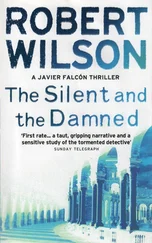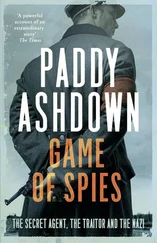D. Wilson - The Traitor’s Mark
Здесь есть возможность читать онлайн «D. Wilson - The Traitor’s Mark» весь текст электронной книги совершенно бесплатно (целиком полную версию без сокращений). В некоторых случаях можно слушать аудио, скачать через торрент в формате fb2 и присутствует краткое содержание. Год выпуска: 0101, Издательство: Pegasus Books, Жанр: Исторический детектив, на английском языке. Описание произведения, (предисловие) а так же отзывы посетителей доступны на портале библиотеки ЛибКат.
- Название:The Traitor’s Mark
- Автор:
- Издательство:Pegasus Books
- Жанр:
- Год:0101
- ISBN:нет данных
- Рейтинг книги:5 / 5. Голосов: 1
-
Избранное:Добавить в избранное
- Отзывы:
-
Ваша оценка:
- 100
- 1
- 2
- 3
- 4
- 5
The Traitor’s Mark: краткое содержание, описание и аннотация
Предлагаем к чтению аннотацию, описание, краткое содержание или предисловие (зависит от того, что написал сам автор книги «The Traitor’s Mark»). Если вы не нашли необходимую информацию о книге — напишите в комментариях, мы постараемся отыскать её.
The Traitor’s Mark — читать онлайн бесплатно полную книгу (весь текст) целиком
Ниже представлен текст книги, разбитый по страницам. Система сохранения места последней прочитанной страницы, позволяет с удобством читать онлайн бесплатно книгу «The Traitor’s Mark», без необходимости каждый раз заново искать на чём Вы остановились. Поставьте закладку, и сможете в любой момент перейти на страницу, на которой закончили чтение.
Интервал:
Закладка:
Reynold shrugged.‘I suppose.’
I looked at the Fleming. ‘And he has not been in touch with you since then?’
John shook his head.
‘Then it seems he never reached the City.’
‘Perhaps he was headed somewhere else,’ John suggested. ‘Another customer. Another commission.’
‘And you’ve no idea where I might seek him?’
‘Johannes is a quite solitary man – secretive even. I do not think he confides his movements to other people. Certainly not to me.’
‘A pity,’ I said. ‘I have important news for him about his children. They are safe and in my care. Should you ever stumble across Master Holbein,’ I said sarcastically, ‘perhaps you would be kind enough to let him know where to find his family.’
Soon afterwards I bade the company farewell. As I rode back to West Cheap I reflected grimly on my wasted morning. Yet, perhaps not totally wasted. Was it just because I disliked the man that I felt convinced John of Antwerp was determined to stop me making contact with his friend?
Over the next couple of days the work of closing up the house continued. I sent Adie and the children on ahead in my coach with the loaded wagons and most of the remaining staff. Because the roads were in such a sorry state due to the heavy rain, it was obvious that the journey would take them at least a couple of days. My plan was to leave twenty-four hours later with three mounted and armed servants and arrive at about the same time. Before I could go I had to reply to the Lord Mayor’s letter. All I could say was that I had failed to contact Holbein and, thus, must regretfully decline the commission. It was the bare truth. It made both me and my friend appear incompetent but I could not add to it. That would only have encouraged speculation about Holbein’s disappearance and set tongues wagging around the City. For the hundredth time I racked my brains to think what could have happened to him. I had been farming out design work to him for some three years and had never had cause for complaint. He always produced his drawings promptly and they were always of the highest quality. Holbein had a knack of divining exactly what the customer wanted and his invention was breathtaking in its originality. He also understood the techniques of metalworking and gem-setting, which meant that he never posed problems impossible for my craftsmen to solve. I remember him telling me once that he had actually practised as a goldsmith in Basel, where he lived before coming to England. Holbein was more than a good craftsman; he was a pleasant man to deal with – inclined to be solemn, even morose, but always agreeable company. If he was in trouble, I would like to be in a position to help him. The fact that his friends were keeping his whereabouts secret from me could only mean that he was in grave danger.
My concern was, if anything, heightened by what happened on Monday morning. After breakfasting simply and early, I assembled my little group of riders in the yard, ready for our departure. We were about to mount when a ragged, bootless boy ran in from the street. He came up and touched his cap. ‘You Master Treviot, the goldsmith?’
‘I am.’
He thrust a small package at me. ‘The man said you’d give me a penny.’
‘What man?’
‘Man what gave it me.’ He smirked at his own cleverness.
I took the flat parcel and fished a coin out of my purse. ‘Stay here while I see if there’s a reply,’ I said.
But the boy shook his head. ‘He said I wasn’t to wait.’ Pausing only to scrutinise the penny, he turned and darted out of the yard.
The offering seemed to be wrapped in several layers of thick paper. Scrawled across the front was my name and the legend, ‘Haste. Haste.’ I took it into the kitchen and unfastened it on the table. With a gasp I instantly recognised Master Johannes’ impeccable draughtsmanship. On five crisp sheets were the cup and cover designs I had been waiting for. The artist had supplied two complete drawings and some detailed studies of the more intricate elements. The two designs were almost identical but the variations offered the client a choice. I was sure that either would delight the Lord Mayor. The cup was magnificent. A stern of two female figures supported a bowl chased with twined foliage and above it the motto FIDES ET INTEGRITAS (‘Loyalty and Trustworthiness’). The fifth sheet had obviously been included by mistake. Although it was also a design for a cup and cover, it was simply carved with a coat of arms and was nothing like the object ordered by Sir John Cotes. I stuffed it into my purse, folded the others carefully and placed them into Golding’s saddle bag. He was all ready for our departure but that departure would now have to be delayed. I sprang into the saddle, told, the others to await my return and set off briskly for the Lord Mayor’s house on Walbrook.
Fortunately, Sir John was at home. He was not altogether pleased to see me but he was relieved to discover that his gift to the king would, after all, be the creation of the royal painter. This and his approval of Holbein’s drawings was sufficient for him to forgive the inconvenience he had been caused. We spent some time discussing the finer points of the design and it was mid-morning before I was able to return to Goldsmith’s Row and set out for Hemmings.
At last there was nothing to keep me in London. I had been able to satisfy my customer. I also knew that Master Johannes was safe – or, at least, alive. What was disturbing was that he was still in hiding. If I could not find him I would have no means of helping Bart in his quest for the murderers and his innocence. There was one other source of information I could try. One other person whose contacts among the lower levels of society were extensive and who just might have heard something. As my little group made its way along Cheapside, Lombard Street and so, down Fish Street Hill, to the bridge, I decided to risk another delay. I would stop in Southwark and seek out my old friend, Ned Longbourne.
Chapter 4
Calling on Ned did not take us much out of our way. He lived in the shadow of the great abbey church of St Mary Overie where he plied the trade of an apothecary. Ned’s grizzled pate covered a storehouse of wisdom – wisdom born of varied experience and much suffering. He had spent most of his life as a monk. Then, King Henry closed the monasteries and, like his brethren, he had been forced to earn a living in the world of ordinary mortals. He had fetched up in another, rather unlikely, ‘convent’, the bawdy house at the old St Swithun’s inn in Southwark. Here he had ministered to the medical needs of the whores, pimps, lorrels and ribalds who congregated within its walls. But two years previously he had been rendered homeless again. In one of the government’s occasional purges St Swithun’s had been closed down. Of course, this did not stop harlotry; it simply dispersed the brothel’s inmates. Ned had had to find his own lodgings. But that was not his only misfortune. He had a ‘companion’; a well-favoured, athletic young man called Jed. Just at the time that Ned needed his support, Jed had formed another attachment and left. It was quite shocking to see how much this desertion aged my friend. Fortunately, his skills and his amiable disposition had won him the affection of many Southwark dwellers and he had little difficulty in finding new accommodation. Now he occupied his time ministering to the needs of the local community among whom he enjoyed a considerable reputation. I was in no doubt that he could have amassed a considerable fortune – or, at least, managed to live very comfortably – through the sale of potions and simples and the performance of minor surgical operations. Heaven knows there are mountebanks a-plenty who gull huge fees out of people with evil-smelling hell broths, incantations and pretended knowledge of astral motions. By contrast, I suspected that Ned all too often provided his services free of charge to those who were too poor to pay (or who feigned poverty).
Читать дальшеИнтервал:
Закладка:
Похожие книги на «The Traitor’s Mark»
Представляем Вашему вниманию похожие книги на «The Traitor’s Mark» списком для выбора. Мы отобрали схожую по названию и смыслу литературу в надежде предоставить читателям больше вариантов отыскать новые, интересные, ещё непрочитанные произведения.
Обсуждение, отзывы о книге «The Traitor’s Mark» и просто собственные мнения читателей. Оставьте ваши комментарии, напишите, что Вы думаете о произведении, его смысле или главных героях. Укажите что конкретно понравилось, а что нет, и почему Вы так считаете.












